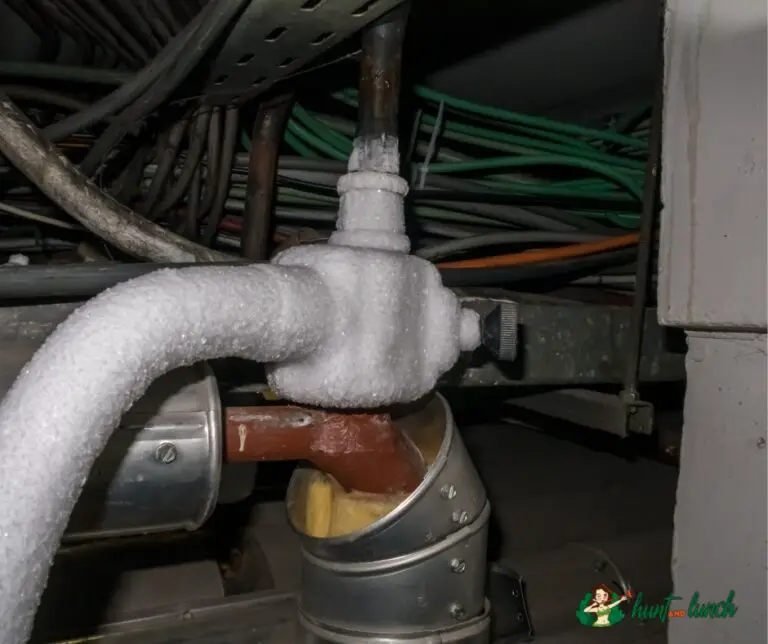
Have you had problems with sloppy and shaky tents though you’re quite sure you drilled your tent stakes into its proper places? Perhaps it’s time you switch to heavy-duty tent stakes.
Nine times out of ten, I would replace manufacturer-supplied tent stakes that come with the backpacking or camping tent set that I purchased. Mostly, they’re too short, too heavy, and can’t burrow deep enough when staked against rocky soils.
In camping, we don’t readily know what type of soil we’re going to set our tents up against so you can’t really depend on the ability of your tent stakes to drill through all kinds of soil, especially when the stakes seem to thin and wire-like.
Are you sure you’re going for this wimpy stake?
A heavy-duty tent stake is a solution for a well-staked tent that can withstand all the outdoor elements. These stakes are larger, longer, sturdier, and can also burrow pretty deep and firm whatever the ground type is.
Why Use Heavy-Duty Tent Stakes?
As I said before, heavy-duty tent stakes are longer, larger, sturdier, and has an excellent burrowing ability. Aside from those things, heavy-duty tent stakes are easier to pull out, and they’re mostly coated with materials that are rustproof and protect the stakes even in the toughest circumstances.
Perhaps the most significant use of heavy-duty tent stakes is to battle the harsh outdoor elements. The weather seems fine and good until you’re in the middle of camping on a less-traversed trail and the rain or wind start to act up. Certain weather conditions need to be rescued with a heavy-duty tent stake.
High and strong winds can move and shake your tent, along with its contents and will also be indiscriminate to the camper. If you set-up your tent with heavy-duty stakes, the chances of the wind moving you and your tent will be less.
Another case is when the ground is dry and compacted that your regular wimpy stakes can’t penetrate the surface. You’ll most likely end up with bent stakes and a poorly-made tent.
Likewise, you’ll need heavy-duty tent stakes when camping on loose soil like in sandy beaches. You’ll need your stakes to dive deep enough for stability. I would recommend stakes that are at least 10-12 inches long for this matter.
Lastly, a good sturdy set of stakes will serve you well when camping on frozen grounds. The challenge on frozen grounds is not pushing the stake against the surface, but pulling it out.
The stakes will probably stick to the ice and will be extremely difficult to remove thus the need durable stakes that won’t break apart. To remove heavy-duty stakes from the ice, just heat the ice using a torch then dig the stakes out.
Tent Stake Alternatives
If you’re set out to camp in a day or two, and you haven’t prepared heavy-duty tent stakes to bring with you, below are some options that I’ve tried and worked out fine.
1. Screwdriver
Screwdrivers are obviously sturdy thus it’s a great substitute for heavy-duty stakes. Select the thicker ones with chunky handles so that they won’t slide from the tent’s loopholes.
2. Logs and a pile of rocks
No tent stakes? No problem. Just grab pieces of fallen tree branches and tie it to your tent’s ropes or guy lines and put a pile of massive rocks on top of the ropes to secure the sticks in its places. This method is especially useful for a windy weather because the logs can’t really go anywhere with the rocks stacked on top of it.
Here’s a quick video of how to set up your tent using the stick method.
3. Wood
Woods are useful stake alternatives, you know. You can shape-up a tent peg on a piece of wood using a sharp knife or machete. Shaping the piece of wood with a machete is a much more efficient way of cutting.
The first thing you should do is to scout for pieces of woods or logs that are thin in diameter and can fit into your tent floor’s holes. Next, grab your cutting tool and slice the edges to make it appear like a sharp pencil tip. The sharp edge makes the stake easier to push against the ground.
Here’s a video tutorial on making a tent stake with a machete for your reference.
So, having presented to you the reasons why you should switch to heavy-duty tent stakes and some stake alternatives, let me now teach you how to make your own heavy-duty tent stake. Tune in below!
Making Your Own Heavy-Duty Tent Stakes
If you’re handy with a welder then, by all means, you can make your own fancy heavy-duty tent stakes. It’s cheaper though it’s not as sleek-looking as commercially-available ones. But if you’re a cheapskate like me, just try doing it on your own to save bucks and also to learn a new craft.
But if you don’t have any welding materials at home like most people, you can just follow the following procedures to come up with heavy-duty tent stakes. The fundamental piece here is the rebar steel which will serve as the stake’s body.
Rebar steels are durable, thick, and resists pulling from the ground better than regular tent stakes. Also, a stake made of rebar is easy to yank out of the ground and most importantly, this particular method is the easiest and fastest – it will only take you half an hour to make four heavy-duty stakes.
What you’ll need
- 2 pcs 20” or 1 40” Rebar #4 steels
- Long metal pipe with a diameter large enough to fit the rebar inside
- Metal-cutting hacksaw blade
- Hammer
- Tape measure
- Marker (crayon or chalk)
- Gloves
- Goggles
Follow these steps!
Step 1. Wear protection.
Rebar steels can be sharp, heavy, and it sometimes creates very hot sparks when cut.
Step 2. Measure the rebar steel
Measure the rebar steel with a tape measure. After getting the measurement, approximate the length you’ll need for four individual pieces of stakes. I would suggest at least 9-12 inches per stake. Mark the length you desire for each stake along the rebar steel.
Step 3. Cut the rebar
Get the hacksaw blade or pliers and carefully cut the rebar with force. Rebar #4 can easily be cut by hand. Rebars tend to roll when cut, so the best way to slice this metal is to lay it on the floor and stomp one foot over the metal while cutting it.
Do this for the rest of the stakes. Don’t forget to wear your goggles while doing this step!
If somehow you purchased the wrong rebar number and got one that’s hard to cut, just make an initial cut (about halfway) through the steel and flake it off from the rest of the steel by hammering the cut side off.
Step 4. Bend the edge of each stake
Now that you have your straight stakes, we’re going to bend the edge of each stake to guarantee that the rope/guy lines won’t slip out of the rebar stake.
Get the long metal pipe and slid about 3-4 inches of your rebar stake inside the pipe. Lay them both on the ground. Grab another piece of pipe then slide it over the rest of the rebar.
Step on the first pipe, grab the second pipe and pull it up carefully until you have made a curved “candy cane” shape on your stake’s edge.
Here’s a useful instructional video for bending the rebar.
Read More: Hauling Gear Into Your Pop-Up Camper? Install A Roof Rack First!
Conclusion
Voila! Now you have your heavy-duty stakes. No sweat, right? All you have to do now is to pound it with a stone or a hammer when you’re setting up your camp.
Remember, you can always opt for the cheaper and more efficient way of creating things like what we did – choosing to make our own heavy-duty tent stake than buying one. It’s a pretty easy and simple solution, and it’s cheap as hell too!
Hey there! Are you using heavy-duty tent stakes? Or are you about to make one after reading this cool article? Share your thoughts below!
Aaand one more thing, will you share this article? If it helped you, it will probably help others too!

I’m Cindy, a free-spirited outdoor enthusiast. Since childhood, Our family frequently goes on weekend camps and my father, who was a skilled hunter, used to teach my siblings and me valuable things about wildlife survival. I made this blog to share my knowledge, experiences, and tips.






